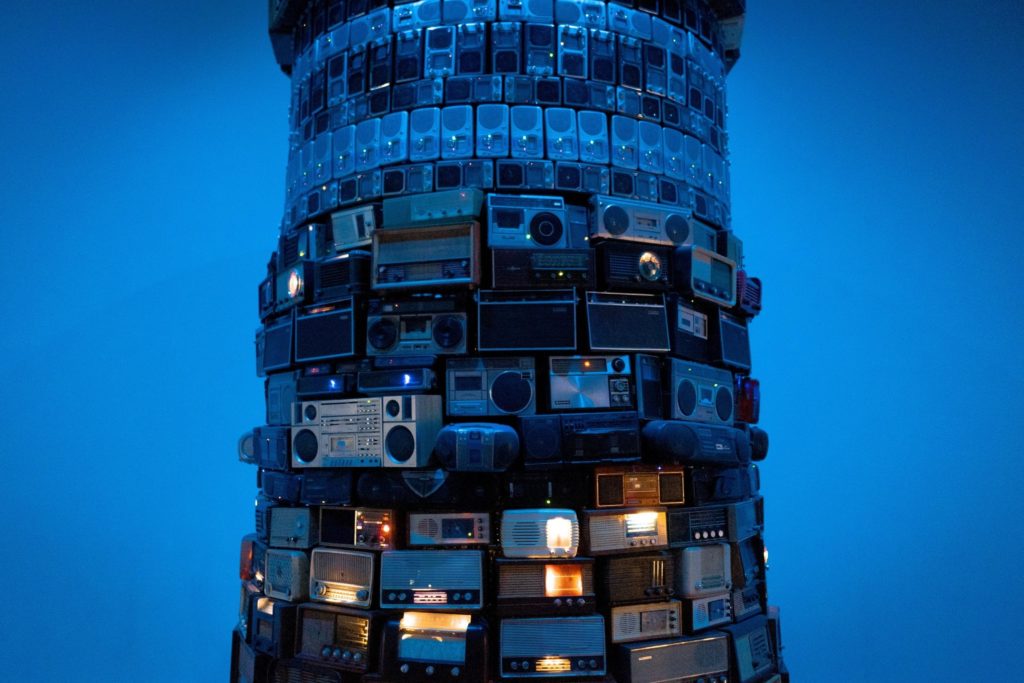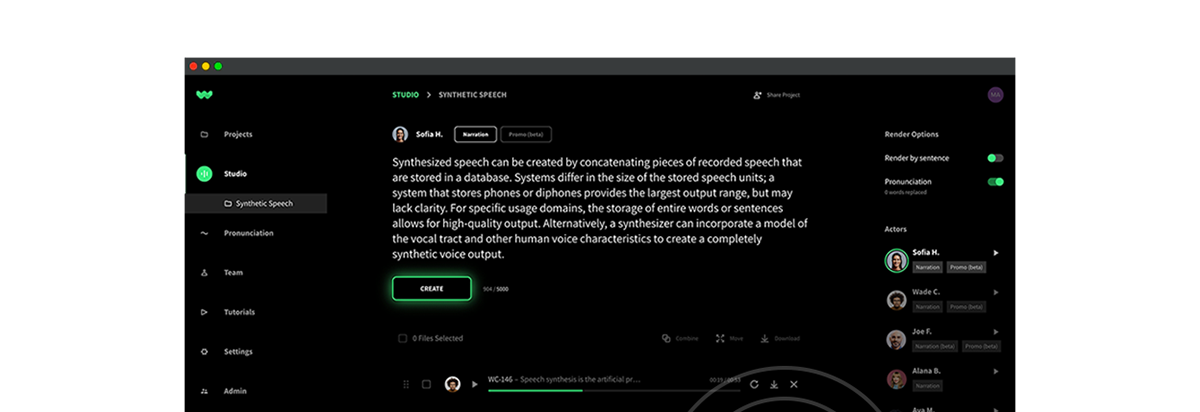Radio advertising is big business across the U.S. Some people think radio is a dying medium, but the figures fail to back this up. Companies spent approximately $14.8 billion on radio show ads last year.
Millions of Americans tune into their favorite radio stations, including podcast stations on Spotify and Pandora. Regardless of your target demographic, you can find your people by investing in radio ads. Many businesses see an advertisement on the radio to be a highly profitable investment.
What is Radio Advertising?
Radio advertising is the practice of purchasing ad spots on popular radio stations to promote your products and services. Businesses like yours pay for every second of airtime, and the station broadcasts your radio commercials to its audience.
The radio advertising definition covers all forms of radio, including traditional and Internet radio stations. There are also numerous types of ads for radio stations to consider.
Learn more about advertising and marketing with AI voice in our free ebook download.
Implementing the best advertising strategy for radio will help you extract the most value from your initial investment. Radio ads have less overhead than TV or Social Media video ads because they only require a voiceover to complete the commercial.
Types of Radio Advertising
What is the radio commercial for you?
Ads for radio stations come in several forms. While a degree of experimentation will be necessary, different ads will accomplish different goals. Let’s go into the various types of radio commercials to help you get started.
Live Reads
Live reads are the simplest form of ad. You’ll most commonly find live reads on popular podcasts, where the host/personality reads out your ad.
The advantage is your audience will already be familiar with their host’s voice. If you want to stand out from others, a live read is an excellent way to do it.
RELATED: What You Need to Know for Voiceover Script Success
Sponsorships
Not everyone wants a straight radio ad. An alternative is the sponsorship ad. These work in the same way as conventional sponsorships. Used for reach or engagement, sponsorships may involve sponsoring a traffic or weather segment. You could also sponsor competitions or sports results.
Jingles
Jingles are highly memorable because they stick in the memory. Think of the McDonald’s jingle as an example. People know it across the world almost as much as the distinctive yellow arches.
The connection between memory and music has been studied countless times, particularly how sounds evoke emotion.
Create your own memorable jingle and make it sing on the radio.
Testimonials
Hearing someone else’s views on a product or service can encourage people to buy. Testimonial radio ads use a real person to run through their experience with your business’s offering.
Using testimonials enhances your brand’s credibility and improves the chances of people trusting your brand.
If you already have testimonials in written form, you could transform them into powerful audio testimonials with AI voiceover. Keep the new testimonials coming in with a testimonial collection tool like Trustmary, and repurpose them in radio advertising
Personified Radio Ad
To create a truly memorable commercial, you need to get the minds of your audience churning. Adding characters with distinct voices to tell your brand’s story is an easy way to engage your audience. After all, personality sells.
Telling someone to buy a product is one thing. Telling a story that ends with a character buying a product is quite another.
Straight Read
The straight read advertisement focuses on the unique selling points of your brand and how to get in touch with you. These are delivered in a monologue format and aim to disseminate pieces of hard information.
If you cannot afford to leave any room for confusion or misunderstanding, the straight read could be the best advertisement on the radio.
Benefits and Drawbacks of Radio Ads
Like any form of marketing, radio advertising comes with several advantages and disadvantages. It’s all about using the right content in the best place.
Benefits
- Selective Targeting – Drill down into your target audience with selective targeting. Genres, hosts, and the time of day all play into figuring out when your ideal customer will most likely be listening.
- High–Frequency Ads – Repeat a message multiple times on the radio to help ingrain it into your listener. Radio is one of the most straightforward formats to utilize high-frequency messaging.
- More Memorable – Audio remains in the memory much longer than visuals. Sound also has the power to evoke emotion, which further reinforces memory.
- Cost–Effective – Ads for radio stations are simpler to invest in and deliver a superior ROI to print and TV advertising.
- Short Creation Cycles – Bring your ads to life in a matter of minutes. It doesn’t take long to go from concept to hearing your completed ad on the radio.
Drawbacks
- Lack of Visuals – Sadly, you have no access to visuals on the radio. However, sound is considered more memorable than visuals.
- Challenging Spot Buys – More popular radio stations may have spots booked up well in advance. It can sometimes make it difficult to find an opening.
- Poor Attentiveness – The chances are many listeners will be simply cycling through channels. As a result, it can be difficult to grab their attention.
How to Create Ads for Radio Stations
The process of creating an ad for a radio spot is not nearly as in-depth as you might think. Even the smallest businesses have access to this advertising form.
Here’s a simple step-by-step guide to creating and distributing your ad:
- Consider your audience. Who are you looking to target?
- Find the right radio stations for you. You will need to figure out what music your target demographic listens to, when they are listening, and the things that trigger them.
- How much do you want to invest? Radio stations sell spots in 15-second increments. The time of day will also influence your costs, with rush-hour ads costing considerably more.
- Determine your preferred ad type. Your choice is mainly dependent on what you want to accomplish.
- Write your ad copy. Employ the services of an expert content marketer to get the most from your message.
- Create your ad in minutes. Platforms like WellSaid provide you with realistic-sounding voices to help you connect with your audience.
- Reach out. Most radio stations have specific details for their advertisers.
Craft Your Radio Ad with WellSaid Labs
Radio has always been known as the “Cinderella medium” for businesses. Its low-cost, easy-to-use characteristics empower brands to deliver their message to listeners effectively.
Make crafting your ads simple with WellSaid. Our AI-powered voice over text software allows you to compose realistic narrations in seconds. It’s the world’s most intelligent platform, as it catches the intonations, pauses, and minute tonal changes in your copy.Find out why so many businesses put their trust in us, get your WellSaid demo now.

